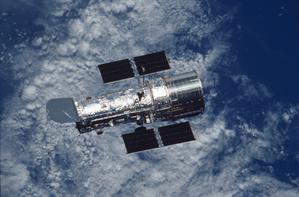Glossary term: Optical Astronomy
Description: Optical astronomy is the practice of studying and observing the Universe (stars, planets, dwarf planets, asteroids, etc.) in the near-infrared, in visible light, and in ultraviolet light. The reason for lumping those three kinds of electromagnetic radiation together is that the optical telescopes, with glass lenses and/or metallic mirrors, that astronomers had originally constructed for observing visible light from celestial objects, are equally well-suited for observing near-infrared or ultraviolet light. In addition, the Earth's atmosphere is transparent not only for visible light, but for the directly adjacent infrared and ultraviolet regions, allowing all three kinds of observations from the ground. Last but not least, the camera chips astronomers use for visible-light observations can also detect near-infrared and ultraviolet light. Put all of this together, and the telescopes and instruments astronomers use to observe visible light work just as well for near-infrared and ultraviolet observations. In consequence, it makes sense for astronomers to collectively describe observations in that range of the electromagnetic spectrum with a single term, namely optical astronomy. The adjective "optical" is also used to describe the spectral range, as in "the optical part of the spectrum." Observations in that range are "optical observations".
Related Terms:
See this term in other languages
Term and definition status: This term and its definition have been approved by a research astronomer and a teacher
The OAE Multilingual Glossary is a project of the IAU Office of Astronomy for Education (OAE) in collaboration with the IAU Office of Astronomy Outreach (OAO). The terms and definitions were chosen, written and reviewed by a collective effort from the OAE, the OAE Centers and Nodes, the OAE National Astronomy Education Coordinators (NAECs) and other volunteers. You can find a full list of credits here. All glossary terms and their definitions are released under a Creative Commons CC BY-4.0 license and should be credited to "IAU OAE".
If you notice a factual error in this glossary definition then please get in touch.
Related Media
Hubble Space Telescope over Earth
Credit: NASA/ESA credit link
License: CC-BY-4.0 Creative Commons Attribution 4.0 International (CC BY 4.0) icons
Keck Telescopes
Credit: NASA/JPL credit link
License: PD Public Domain icons










